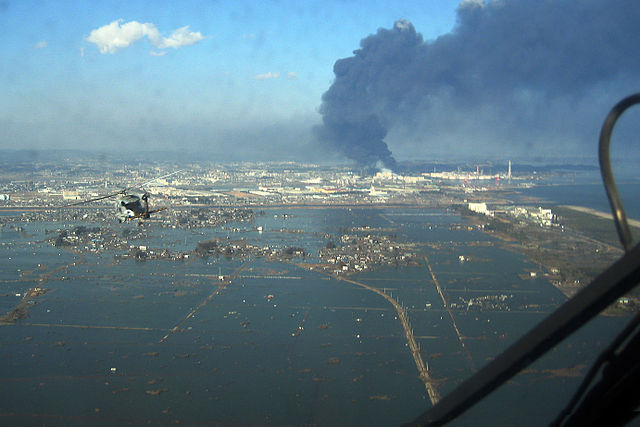Yesterday was the third anniversary of the Great East Japan Earthquake and Tsunami, and of the resulting Fukushima nuclear disaster. At 2:46 pm, people all over Japan held a minute’s silence to commemorate the almost 16.000 dead and the more than 2600 people still missing.  That doesn’t sound much, does it? What about 270.000? That’s the number of people who still – three years after – could not return home and live in shelters, often just simple container villages. Some of them will be able to eventually go home, once the reconstruction in the devastated areas – a total of about 560 square kilometers of land near the coast were flooded, and more than 1.1 million buildings were damaged – will be complete. Others will have to wait longer, at least three more years or, more likely, forever: Those who are from what is euphemistically called in Japan a “difficult to return zone”, meaning those areas that are contaminated by nuclear fallout of the Fukushima plant.
That doesn’t sound much, does it? What about 270.000? That’s the number of people who still – three years after – could not return home and live in shelters, often just simple container villages. Some of them will be able to eventually go home, once the reconstruction in the devastated areas – a total of about 560 square kilometers of land near the coast were flooded, and more than 1.1 million buildings were damaged – will be complete. Others will have to wait longer, at least three more years or, more likely, forever: Those who are from what is euphemistically called in Japan a “difficult to return zone”, meaning those areas that are contaminated by nuclear fallout of the Fukushima plant.
So, what has happened in the last three years? Well, all of the 48 nuclear power plants have been shut down after the tragedy and are still offline, but the plans of the former government for an energetic turn to renewable energy sources were shelved with the election of Shinzo Abe as prime minister. Although the standards for nuclear power plants have been tightened, and not all of them will go back online because of that, more and more people start to openly oppose nuclear power in Japan.
Dissatisfaction also rises within the survivors of the catastrophe. Many of them believe that the memories of that day are beginning to fade, and that the Olympics that were awarded Japan for 2020 will only take away attention from the areas that are still in need of being rebuilt. They also believe that the reconstruction in the devastated areas goes too slowly, and there are fears that the constructions necessary for the Olympics will further hamper the ones in the affected areas.
Interestingly, Shinzo Abe has promised to speed up building a highway through the destroyed area – in order to increase tourism there. Part of the highway will run through areas that are at the moment still heavily contaminated, and although decontamination is in progress (it is unclear what is happening with the removed soil though…) – would you go to Fukushima as a tourist?
